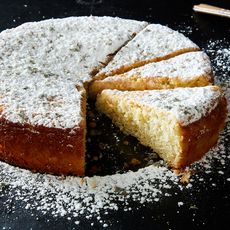
2 cups self-rising flour, plus more for dusting
1 cup full-fat Greek yogurt
Pizza sauce and shredded mozzarella, for topping
- Put a pizza stone or inverted baking sheet on the center rack of the oven and preheat to 450 degrees F.
- Put the flour and yogurt in a large bowl and mix with a fork until a shaggy dough forms. (The dough may appear dry and crumbly at first, but it will come together as you mix it.) Turn the mixture out onto a lightly floured work surface and knead until the dough is smooth and slightly elastic, about 8 minutes, dusting with more flour if necessary. If the dough feels too dry, add water, a tablespoon at a time and continue kneading until it is soft and pliable.
- Divide the dough in half, roll into two balls, and then use a rolling pin to roll the balls out into two 10-inch pizza crusts. Dust the back of another inverted baking sheet or pizza peel with more flour, semolina or coarse cornmeal and place a circle of dough on top.
- Top the dough round with sauce and shredded cheese as desired, leaving a half-inch bare border around the edge. Slide the pizza onto the preheated stone or baking sheet in the oven. (Alternatively, roll out the dough on a baking sheet, top as desired and put the sheet in the oven to bake.) Cook until the crust is golden and the cheese is bubbling, 8 to 10 minutes. Using a large spatula, transfer the pizza to a cutting board and let sit 5 minutes. Repeat with the remaining dough round.







 rnut squash (3 pounds)
rnut squash (3 pounds)